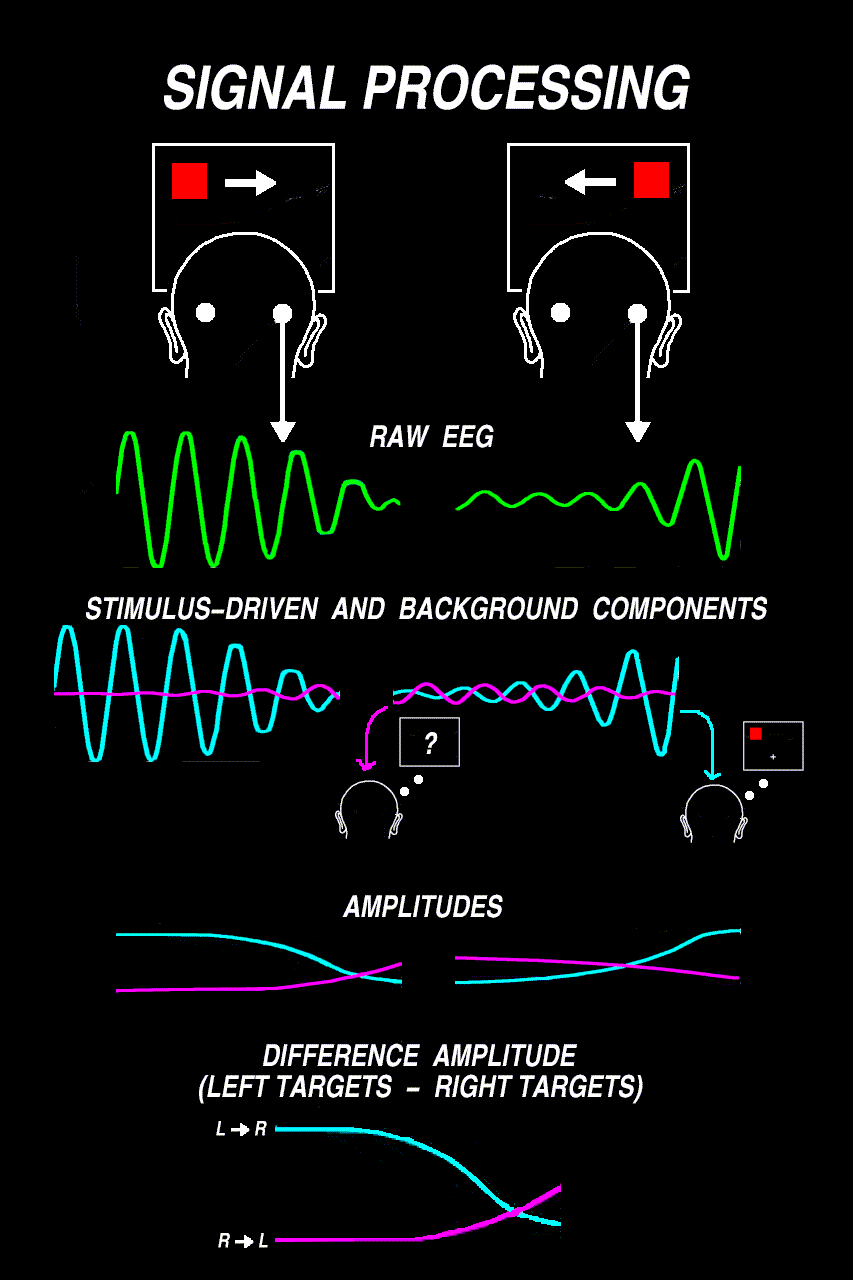

What we're interested in is the way in which the amplitude of this voltage changes during shifts of attention.
In order to get a better look at those changes, we separate electrical activity into a stimulus-driven component and a background component. Stimulus-driven EEG is a measure of the brain's response to the flashing stimulus, while background EEG represents unrelated processing. So if a person is paying a lot of attention to the task, we should see a lot of stimulus-driven activity and very little background.
For each of these components, we calculate amplitude as a function of time, and then subtract the amplitude during leftward shifts of attention from the amplitude during rightward shifts.
![[previous]](../left_arrow.gif) |
![[contents]](../up_arrow.gif) |
![[next]](../right_arrow.gif) |